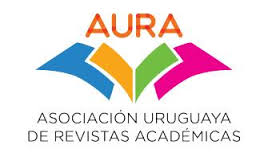DRYING OF AQUATIC MACROINVERTEBRATES FOR BIOMASS CALCULATIONS
DOI:
https://doi.org/10.26462/33.2.6Keywords:
Chile, dry weight, organism preservation, aquatic invertebrates, streamsAbstract
The estimation of biomass in aquatic macroinvertebrates represents a tool for understanding part of the functioning of ecosystems and the dynamics of aquatic food webs. In this work, two methods were evaluated to obtain macroinvertebrate biomass under different types of preservation (preserved in ethanol or frozen), founding that frozen samples take longer to obtain a constant weight. Organisms that were sampled fresh, were frozen (-20°C, 24 hr) before weighing were used. In addition, organisms that were kept preserved in 70% ethanol for a period longer than six months, were used. All organisms were dried in an oven at 60°C and every 12 hr were weighed on a digital balance. Frozen specimens had a large weight loss within the first 36 hr. Then at 72 hr they reached a constant weight. Most of the organisms preserved in 70% ethanol had a weight loss during the first 24 hr and constant weights were reported from this same time. This study confirms that dry weight estimation of aquatic macroinvertebrates is affected by ethanol, reaching constant weights in a shorter time for frozen individuals.
Downloads
References
Alba-Tercedor, J. (1996). Macroinvertebrados acuáticos y calidad de las aguas de los ríos. IV Simposio sobre el Agua en Andalucía: Almería (Vol. 2, p. 203). IGME.
Benke, A. (1996). 'Secondary production of macroinvertebrates', in F. R. Hauer and G.A. Lamberti (eds.), Methods in stream ecology: Academic, New York, 557-578 pp.
Crisp, D.J. (1971). 'Energy Flow Measurements', in N. A. Holme and A. D. McIntyre (eds.), Methods for the Study of Marine Benthos, International Biological Programme Handbook No. 16. Blackwell Scientific Publications, Oxford, 334pp.
Cummins, K.W., Wilzbach, M., Kolouch, B. y Merritt, R. (2022). Estimating macroinvertebrate biomass for stream ecosystem assessments. International Journal of Environmental Research and Public Health, 19, 3240.
Dekanová, V., Strebevorá, Z., Novikmec, M. y Svitok, M. (2023). The effect of preservation on biomass and length estimates and its variation within and between two mayfly species. Limnology, 24, 181–191.
Fierro, P., Bertrán, C., Tapia, J., Hauenstein, E., Peña- Cortés, F., Vergara, C., Cerna, C. y Vargas-Chacoff, L. (2017). Effects of local land-use on riparian vegetation, water quality, and the functional organization of macroinvertebrates assemblages. Scienceof the Total Environment, 609, 724–734.
Fierro, P., Hughes, R.M. y Valdovinos, C. (2021). Temporal variability of macroinvertebrate assemblages in a Mediterranean coastal stream: Implications for Bioassessment. Neotropical Entomology, 50, 873–885.
Gualdoni, C., French, P.W. y Oberto, A.M. (2013). Relaciones longitud-biomasa em macroinvertebrados bentónicos de un arroyo serrano del sur de Córdoba, Argentina. Ecología Austral, 23, 194–201.
Hankel, G.E., Nieto, C., Romero, F., Gultemirian, M.L., Reynaga, M.C., Taboada M. de los A., Martín P.A.R., Rodríguez J.S., Manzo V. y Molineri C. (2023). Structure, biomass, and secondary production of benthic macroinvertebrates in subtropical Andean rivers. Anais da Academia Brasileira de Ciência, 95, 1.
Hurtado-Borrero, Y., Pinilla-A, G., Tamaris-Turizo, C.E. (2020). Relaciones talla-peso de ninfas de Anacroneuria caraca Stark, 1995 y A. marta Zuñiga & Stark, 2002 (Plecoptera: Perlidae) de un río neotropical de montaña. Hidrobiológica, 30, 203–209.
Keil, C., Grebenteuch, S., Kröncke, N., Kulow, F., Pfeif, S., Kanzler, C., Rohn, S., Boeck, G., Benning, R. y Haase, H. 2022. Systematic studies on the antioxidant capacity and volatile compound profile of yellow mealworm larvae (T. molitor L.) under different drying regimes. Insects, 13, 166.
Lovergrove, T. (1962). The Effects of Various Factors on Dry Weight Values. Rapports et Procesverbaux des Réunions de la Mer, 153, 86–91.
Luek, A., Morgan, G.E. y Ramcharan, Ch.W. (2015). Biomass of benthic invertebrates unaffected by industrial damage to lakes despite effects on species composition. Hydrobiologia, 744, 101–114.
Machuca-Sepúlveda, J., Fierro, P. y Nimptsch, J. (2021). Variablity of benthic macroinvertebrate biomass in two constrasting streams in southern Chile. Hydrobiologia, 849, 641–660.
Machuca-Sepúlveda, J., López, M., Fierro, P., Beltrán, J.F., Norambuena, J-A., Pinheiro S. Oliviera, R., Zamorano, M. y Farias J.G. (2024). Ecological responses of freshwater macroinvertebrates to augmented drougth: A literature review and projections. Ecological Indicators, 164, 112153.
Mährlein, M., Pätzig, M., Brauns, M. y Dolman, A.M. (2016). Length-mass relationships for lake macroinvertebrates corrected for backtransformation and preservation effects. Hydrobiologia, 768, 37–50.
Malone, C.R. y Nelson, D.J. (1969). Feeding rates of freshwater snails (Goniobasis clavaeformis) determined with cobalt. Ecology, 5, 728–730.
Mason, W.T., Lewis, P.A. y Weber, C.I. (1983). An evaluation of benthic macroinvertebrate biomass methodology. Environmental Monitoring and Assessment, 3, 29-44.
Méthot, G., Hudon, C., Gagnon, P., Pinel-Alloul, B., Armellin, A. y Tourville Poirier, A-M. (2012). Macroinvertebrate size-mass relationships: how specific should they be. Freshwater Science, 31, 750–764.
Miserendino, M.L. (2001). Length-mass relationships for macroinvertebrates in freshwater environments of Patagonia (Argentina). Ecología Austral, 11, 3–8.
Moreyr,a A.K. y Padovesi-Fonseca, C. (2015). Environmental effects and urban impacts on aquatic macroinvertebrates in a stream of central Brazilian Cerrado. Sustain. Water Resource Manager, 1, 125–136.
Ortiz, J.D. y Puig, M.A. (2007). Point source effects on density, biomass and diversity of benthic macroinvertebrates in a mediterranean stream. River Research and Applications, 23, 155–170.
Ribeiro Ferreira, W., de Souza Rezende, R., Tavares Martins, R., Gonçalves, Jr, J.F., Hamada, N. y Callisto, M. (2023). Effects of predation risk on invertebrate leaf-litter shredders in headwater streams in three Brazilian biomes. Aquatic Sciences, 85, 28.
Rivera-Usme, J.J, Pinilla-Agudelo, G.A., Camacho-Pinzón, D.L., Castro-Rebolledo, M.I. y Rangel- Churio, J.O. (2014). Relaciones entre el peso seco y la longitud total de los géneros de invertebrados acuáticos Helobdella (Hirudinea: Glossiphoniidae) y Asellus (Crustacea: Asellidae) de un humedal andino de Colombia. Actualidades Biólogicas, 36, 39–45.
Sabo, J.L., Bastow, J.L. y Power, M.E. (2002). Lengthmass relationships for adult aquatic and terrestrial invertebrates in a California watershed. Journal of the North American Benthological Society, 21, 336–343.
Smock, L.A. (1980). Relationships between body size and biomass of aquatic insects. Freshwater Biology, 10, 375–383.
Stoffels, R.J., Karbe, S. y Paterson, R.A. (2003). Length-mass model for some common New Zealand littoral-benthic macroinvertebrates, with a note on within-taxon variability in parameter values among published models. New Zealand Journal of Marine and Freshwater Research, 37, 449–460.
Von Schiller, D. y Solimini, A.G. (2005). Differential effects of preservation on the estimation of biomass of two common mayfly species. Archiv für Hydrobiologie, 164, 325–334.
Wallace, J.B. y Webster, J.R. (1996). The role of macroinvertebrates in stream ecosystem function. Annual Review of Entomology, 41, 115–139.
Woodcock, T.S. y Huryn, A.D. (2007). The response of macroinvertebrate production to a pollution gradient in a headwater stream. Freshwater Biology, 52, 177–196.
Zwarts, L. (1991). Seasonal variation in body weight of the bivalves Macoma balthica, Scrobicularia plana, Mya arenaria and Cerastoderman edule in the Dutch Wadden Sea. Netherlands Journal of Sea Research, 20, 231–245.











